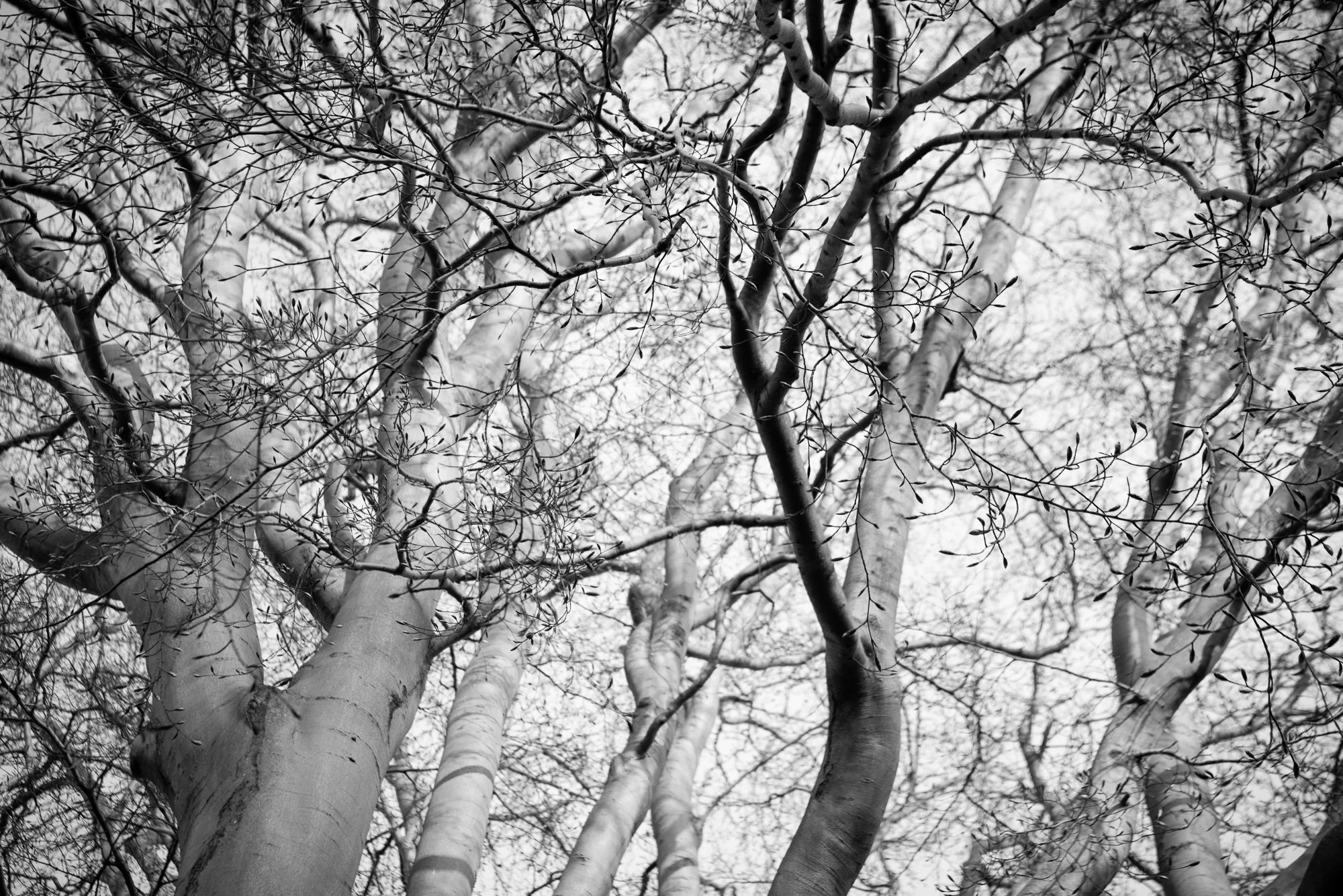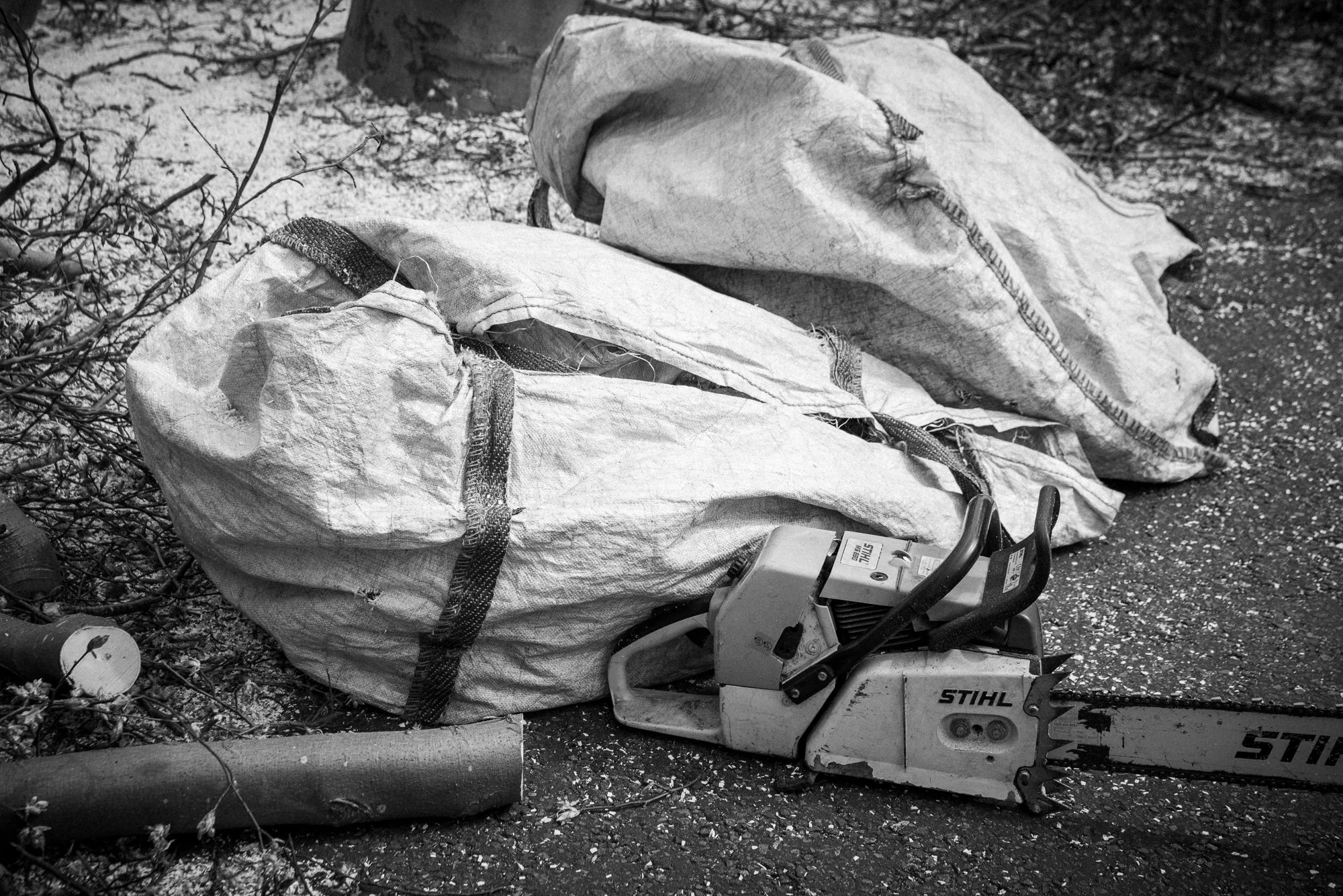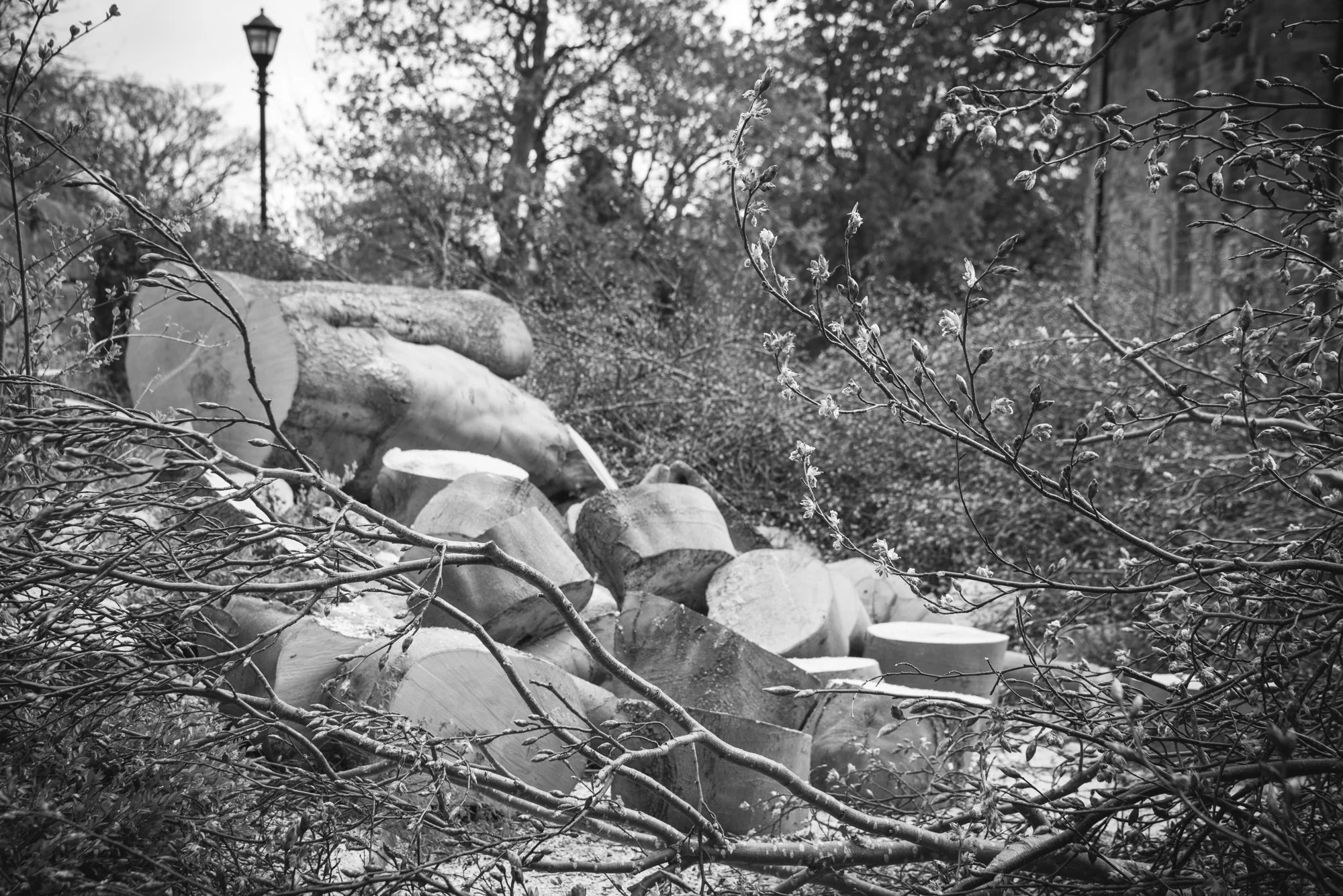The Fallen Giant
There’s something quietly monumental about living alongside a tree for years without really thinking about it. I walked past it multiple times every day, maybe glanced up when the light filtered through in just the right way, or stopped for a second when the leaves got darker in late summer. It was just there… until it wasn’t.
This post is about the day they brought down the Beech, “my” Copper Beech. It stood just opposite the row of houses where I lived my first 10 years in Edinburgh: a huge, proud, twisting thing that had been there long before I arrived.
The giant Copper Beach
The tree was diseased. There wasn’t really a choice. If it fell — and it could given its size and the frequent wind storms in Scotland — it could have taken out a number of houses with it. And then, one morning it was marked for removal. So, over the course of a couple of long days, it was brought down, piece by piece.
It felt right to photograph the whole thing in black and white. I wanted no distractions from what was actually happening because it wasn’t just a bit of tree surgery, it was a kind of quiet dismantling of a long chunk of history.
The team worked methodically, almost tenderly at times. You could hear a deafening silence behind the sound of the chainsaws. First the upper limbs, then the branches further down, and finally the massive trunk. Watching it come apart felt strange. I could almost see the grain of the wood shift with every cut. I could smell the cut wood and sap all at once.
Getting ready for the final cut
People came and went throughout the day. Some stopped to watch for a few minutes, some stayed longer. A few looked upset, others just curious. Neighbours discussed, questioned the necessity of doing this. It struck me that most of us probably never realised how important the tree had been until we were watching it disappear. Funny how we’re like that with things that grow slowly.
A couple of days later, my daughter and I counted 153 growth rings on the stump, but there were many more too tightly packed close to the centre to see clearly (easily 20-25 more). It had lived through the tail end of the Industrial Revolution, two world wars, Man landing on the Moon and the arrival of broadband.
I’ve always loved trees (not in any botanical or scientific way), just instinctively. They hold space differently. They’re patient — and yes, you can hug them. And this one had been a quiet part of the backdrop to my life there. Its absence felt so much louder than the noise of the chainsaws a few days earlier.
The Fallen Giant
It’s easy to overlook what trees give us in cities. It’s not just shade and cleaner air (although these are becoming ever more important), but a sense of scale and calm. They slow things down. Trees remind us that time can stretch beyond meetings and bin days and roadworks. Trees like the Fallen Giant connect us to something older, to something rooted in place, literally and figuratively. Losing it was a reminder of how fragile our relationship with the natural world can be, especially in urban spaces where the balance is already so tight.
These images don’t try to tell the whole story. They just show what it looked like. But I hope they carry something of the atmosphere, the weight of it, the stillness and the strange beauty of something coming to an end.
If you knew the Fallen Giant, or even just walked past it once or twice, maybe you’ll see something familiar. And if not… well, I hope the images still speak for themselves.


